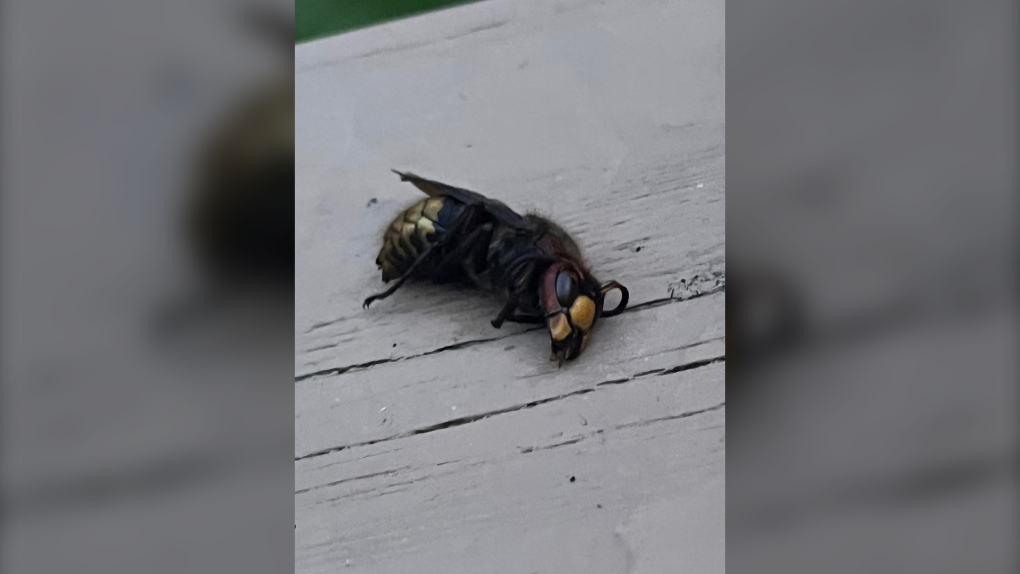Across social media, there have been many sightings in the Ottawa Valley region of what are being described as giant hornets.
“It looked like the normal wasp, but it looked like a giant version of that; like, it was huge,” says Sarah Del Villano.
The Smiths Falls resident says she was working from home the other week when she saw a massive hornet in her kitchen.
“I looked over and my heart stopped, and I went and grabbed the fly swatter.”
Douglas resident Mark Braithwaite told CTV News he experienced something similar in his home, where he says a hornet the size of a large moth was in his living room.
“It jumped off the window and landed on the wall, and I took a closer look, and it was certainly a hornet of some sort or a wasp,” he said. “I’d never seen anything that big before; never.”
 Photo provided by Mark Braithwaite, taken May 30 2024, of a European hornet seen in Douglas, Ont.
Photo provided by Mark Braithwaite, taken May 30 2024, of a European hornet seen in Douglas, Ont.
Among social media posts, many were quick to jump to the assumption that these massive insects were so-called “murder hornets”, or correctly known as giant Asian or northern hornets, which had been brought to awareness in recent years.
But according to Rob Longair with the Canadian National Collection of Insects, Arachnids, and Nematodes, these large hornets are actually European hornets, and are not considered invasive.
“This species (the European hornet) has been in North America for 170 years,” Longair tells CTV News.
“There is no record of one of these giant Asian or giant northern hornets having been recorded in eastern North America.”
Longair says the giant Asian hornet has only ever been spotted on the west coast of North America, in British Columbia and the state of Washington. He describes the size of the European hornet as roughly the size of a thumb pad on a human hand. He says the giant Asian hornets are around two inches in length.
“They really are substantially larger than the European hornet that we get here.”
While it may look intimidating, Longair says the danger that European hornets pose is relatively minimal.
“A small number of stings in the wrong part of the body could be a serious health problem, but for the most part, all they’re concerned about is going out and catching other insects,” he says.
“These particular European hornets are not all that likely to cause even the sort of problems that some of the yellowjackets we have do.”
Another identifying factor of the European hornet is that they are quite noisy when in flight.
“The one solace I do take is I remember it was so unbelievably loud,” says Del Villano. “So if there’s one near me, I’ll probably hear it coming from far away.”